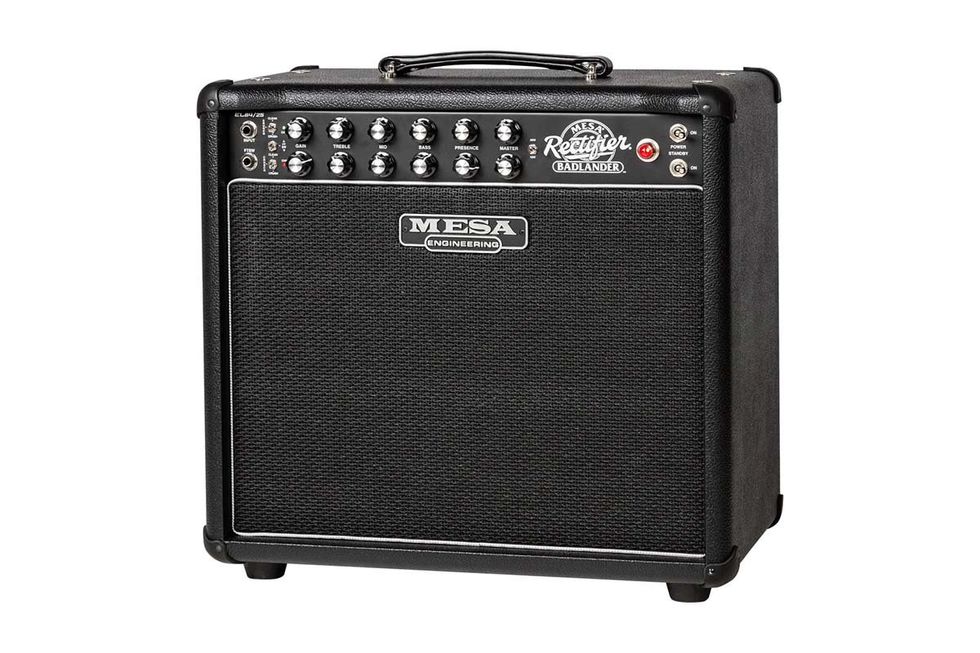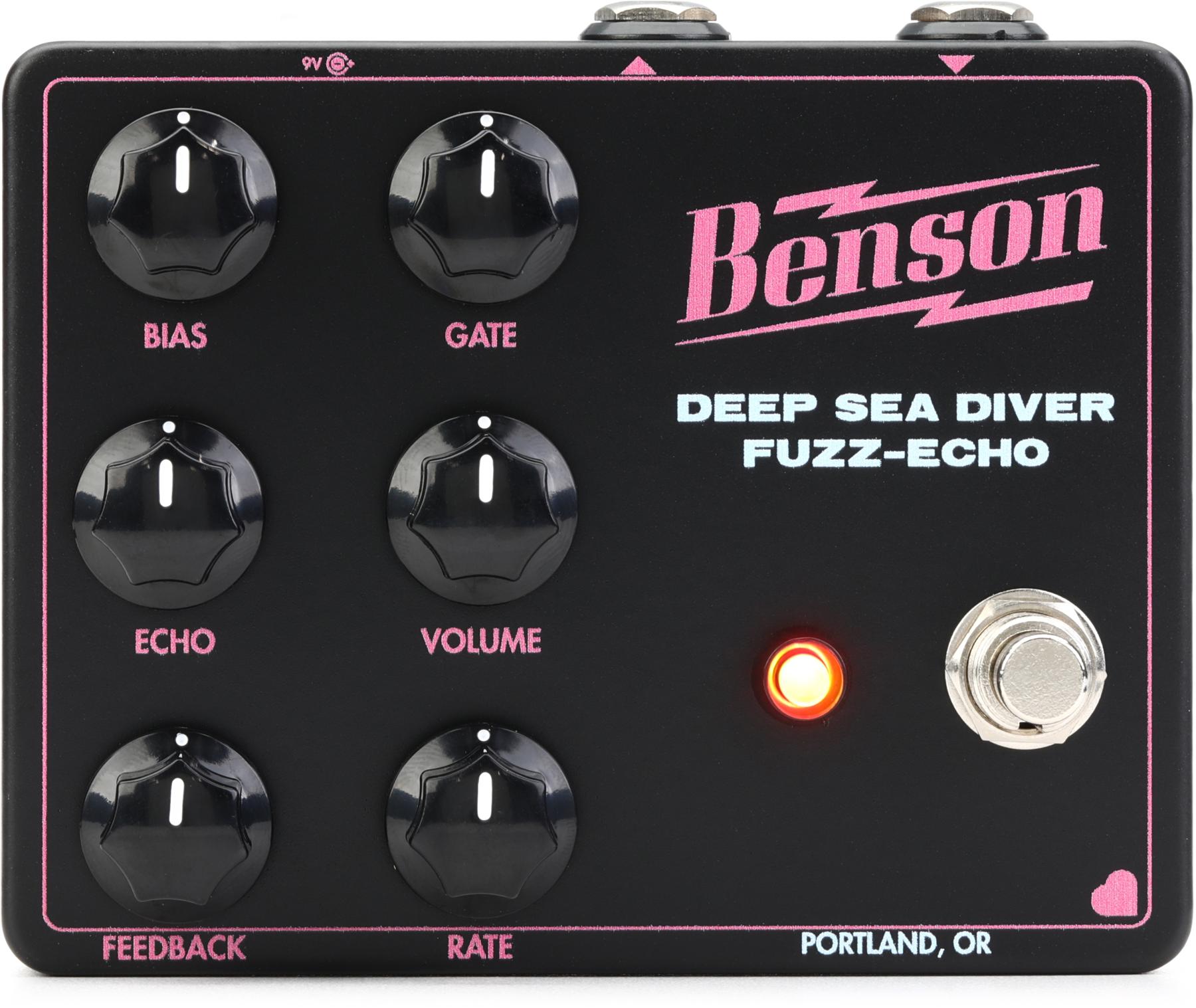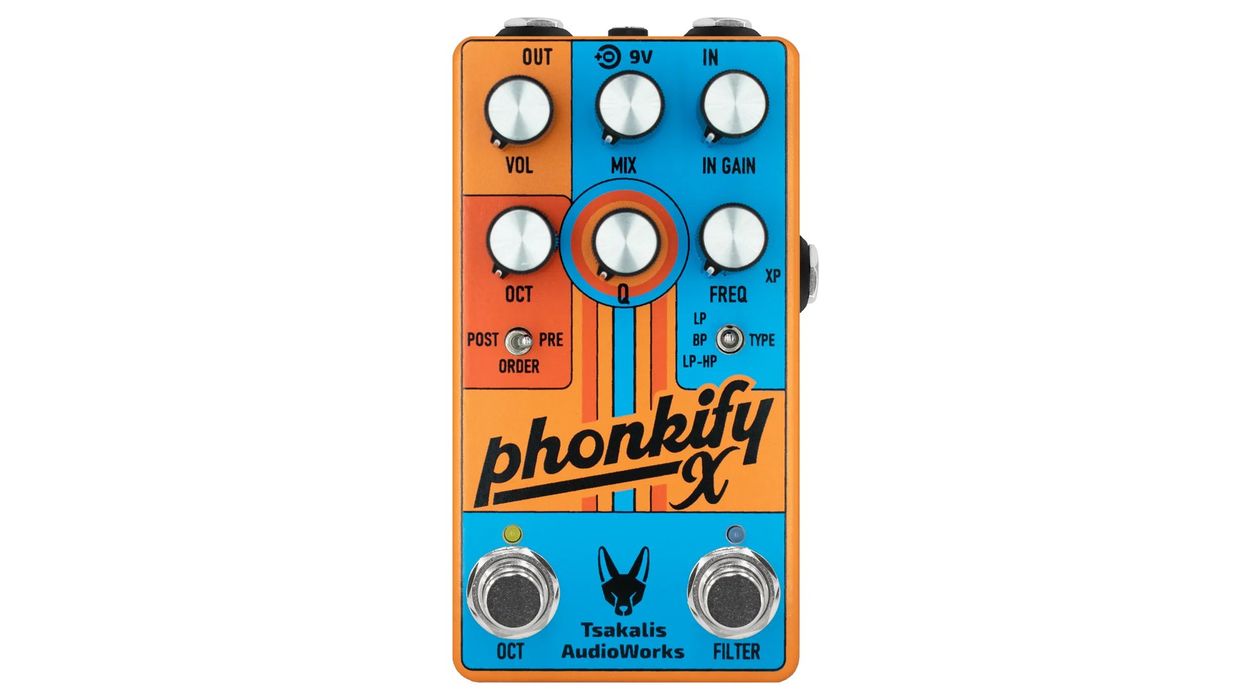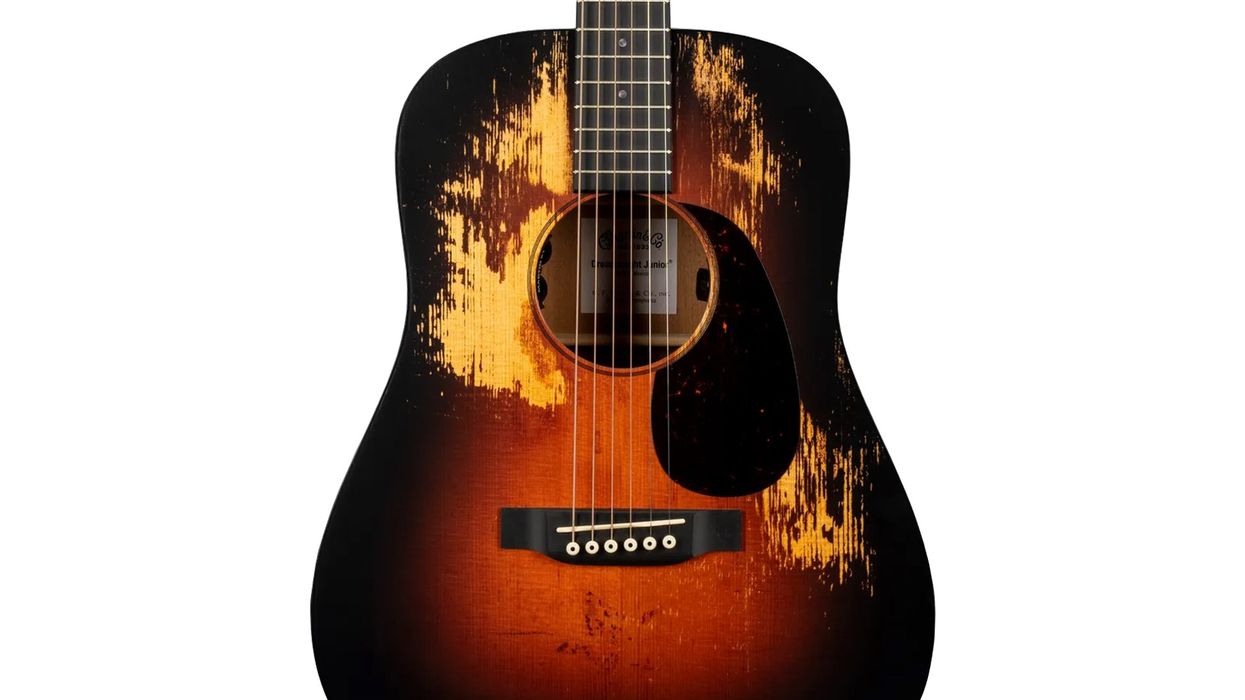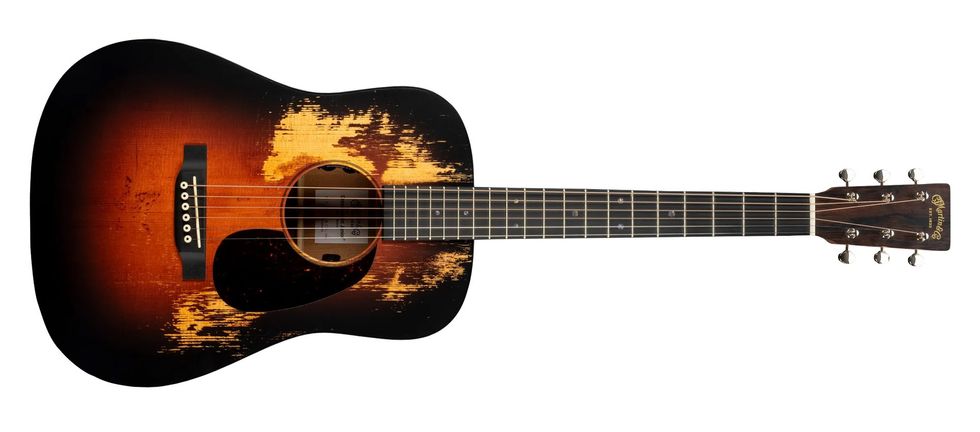Mesa/Boogie made its name with the Mark Series amps, which made classic rock players of many stripes stand up and take notice. But the company’s next comprehensive range, the Rectifier Series amps, became favorites for a very different set of players. With big, powerful heads coupled with stacks pumping efficient 4x12" and 2x12" speaker arrays, the Single, Dual, and Triple Rectifier models appealed to a host of big-stage rock, grunge and metal players, and the sizzling high-gain and thumping lows became a second, defining sonic template for the company.
It's hard to believe the Rectifier Series has been with us for more than 30 years. In that time, the line constantly evolved and grew. Later Rectifier Series amps like the Trem-O-Verb, Maverick, and Blue Angel even broke the arena-stack mold that defined the first Rectifier amps. That trend continues in the form of the new Badlander 25. Though the Badlander 25 features ready-to-rock Rectifier Series preamp stages in both of its two channels, it’s a compact 25-watt 1x12" combo fired by a pair of EL84s—a formula that produces tones reminiscent of its siblings, while yielding a personality unique to the Badlander.

Head-On Collision
The Badlander 25’s control complement is familiar and relatively simple. Each channel features an identical set of independent controls: a 3-way gain/voicing switch offering clean, crunch, and crush modes, followed by knobs for gain, treble, mid, bass, presence, and master volume. There’s a global 10-watt/25-watt output switch at the end of the line, as well as power and standby switches. The single input and footswitch jack are also on the front. Around back are connections for one 8-ohm speaker and two 4-ohm speakers, send and return for the effects loop, and controls for the built-in CabClone impulse response feature, which include a XLR DI output with ground lift switch, headphone out with level control, individual eight-position cabinet IR selectors for each channel, and a USB port to store and load alternative IRs, including third-party ones.
Those in the know will be pleased to hear that the throaty grind from the crunch mode and searing high gain in crush mode that you’d expect to hear is here in abundance. But there’s also a nifty pinch of something a little different.
In addition to the two EL84s in the output stage, the amp is driven by five 12AX7 tubes in the preamp and phase inverter. Keen-eyed observers might note one tube that isn’t there: the rectifier that gave the series its name in the first place. That’s because the Badlander 25, as with some other later Rectifier models, uses silicon diodes (aka solid-state rectification) in the place of a tube. But I didn’t feel like the absence of a tube rectifier made a ton of difference in terms of feel or what I heard from the amp. The amp is housed in a chunky, compact cabinet measuring 19" x 17.875" x 11.25" and weighs 40 pounds. And a 12" Celestion G12M 65 Creamback broadcasts the Badlander’s boisterous voice.
Lights Out Tonight
The Badlander 25’s personality is an enjoyable blend of classic Mesa/Boogie voice and some enticing new character traits. For some readers, neither the Mesa sonic signature nor the Rectifier Series preamp voicings need much in the way of introduction. And those in the know will be pleased to hear that the throaty grind from the crunch mode and searing high gain in crush mode you’d expect to hear is here in abundance. But there’s also a nifty pinch of something a little different. Maybe it’s the signature sound of an EL84 output stage being pushed to the point of a raw, edgy response. Whatever it is, it makes this combo something very much its own and more than a cookie-cutter Rectifier done small.
Even though the 10-watt/25-watt power switching is very handy and the master volumes work well together to deliver usable sounds at lower sound-pressure levels, I found the Badlander 25 really sounded best at higher volumes. And at that point, man, it’s very much the beast that Mesa intended. Few of us associate the Mesa/Boogie brand with clean tones, but they are surprisingly good here—crisp, clear, and punchy, with chime and shimmer that lean to the Vox-y side of the spectrum. Set to 25 watts with the master volume cranked, there’s even enough headroom to keep a Les Paul impressively clean—all at volumes that should keep up with most drummers in the average club-sized venue. In the 10-watt mode, clean tones tend to sound a little rounder with a little more natural compression, while overdrive settings are slightly softer around the edges and segue into break-up a little quicker. In general, though, the lower-power setting still sounds and feels much like the amp at full-power.
While all three gain modes sound awesome, the crush mode offers the most fun of the three. It yields a crispy crackle in the highs and a sizeable serving of bass thump, especially relative to the cabinet size and power. It’s the sound that launched a thousand hits—at least in grunge and hair-metal realms. And it put a huge smile on my face every time I dialed it up. Crunch mode sounds were less immediate. Sometimes, they sounded a touch congested compared to clean and crush. Sometimes, they sounded a touch congested and choked. And dialing up perfect, organic volume shifts when moving between clean and crunch could be tricky. When pushed, the crunch mode still delivers great rock ‘n’ roll sounds. But it is, perhaps, the least intuitive mode of the three. But it is, perhaps, the least intuitive mode to use.
The Verdict
I’m impressed with the new Badlander 25. It offers plenty of classic Mesa/Boogie character with a Vox-like twist. The construction is rugged and robust. And the controls are generally easy and intuitive to navigate and put into practice. Because the cabinet is relatively small, it can contribute a little boxiness to some sounds. Still, the cabinet’s depth helps to compensate, and keeps the low end full for an amp of this size, which should please long-time Mesa/Boogie players used to fat sounds. Add in the bonus of the built-in CabClone IR, which delivers robust big-cab tones for front-of-house or recording needs, and you have an impressive combination of versatility, convenience, and power. And for big Boogie Rectifier fans that have less use for a full-size stack these days, it’s a very practical alternative.



